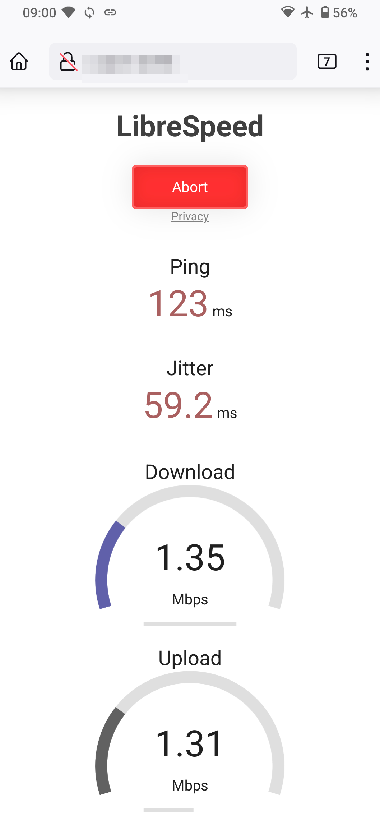In the past two months, I’ve flown form Germany to Spain twice. With a flight time of over 2 hours, it’s actually worthwhile to jump through the hoops and connect to the in-flight Internet over Wifi. I can’t quite believe it, but my last post on in-flight Internet access in Europe is already back from 2018. Yes, Covid got in the way. So let’s have a look at how the system worked for me this time around.

Like back then, there were several speed options at different price points, and this time around, I selected the ‘fastest’ option, 1.5 Mbit/s, for 9 euros for the duration of the flight. The speed was good enough for small screen web browsing and messaging, but I think it would have been quite a ‘limited experience’ with a tethered PC. That wasn’t much of an option, however, as I couldn’t open my notebook anyway and use the notebook in a meaningful way due to the limited space available in front of me in economy class .
At 1.5 Mbps, I didn’t even try to do fancy stuff such as streaming a video from Youtube or similar platform. What I did, however, was to make a phone call with my XMPP messenger app (Conversations) and this worked surprisingly well. Speech quality was good in both directions. Also, Voice over Wifi was not blocked, so I repeated the exercise and could also establish a voice call that way. Very nice!
Speaking about delay times: As shown in the screenshot above, the round trip delay time was around 120 ms, so the packets must have traversed the ground based LTE base stations of the European Aviation Network (EAN) rather than the satellite part. On my second flight, ping times were around 700 ms when I ran the speed test at some point during the flight. That means that my Internet connection probably went through the satellite part of the EAN.
As for browsing the web on my smartphone, it did work, but the very limited speed was clearly having an impact, as even on mobile devices, web pages these days include tons of images and other content. Fortunately, I consume most of my daily news via RSS and my feed reader, which, due to text only and images only being loaded on request worked reasonably quickly.
So what’s my overall feeling here? Well, 1.5 Mbit/s doesn’t feel like 2024 to be honest, and I wonder why both airlines I flew with did not offer higher speeds!? For most people these days, the Internet is all about fast access to multimedia content. After all, there’s an LTE based ground system in addition to the satellite backhaul, which should be capable to handle higher speeds.
Hi Martin,
Interesting post as always.
Reminded me of this article from Ericsson https://www.ericsson.com/en/blog/2022/1/who-cares-about-peak-download-speeds-in-5g that stated (through measurements) that for a “very good” user experience you need around 20Mbps with 5Mbps being the minimum. So a little bit more to go for internet on airplanes, but as you state, for messaging, checking emails or even an occasional voice call it is good enough.